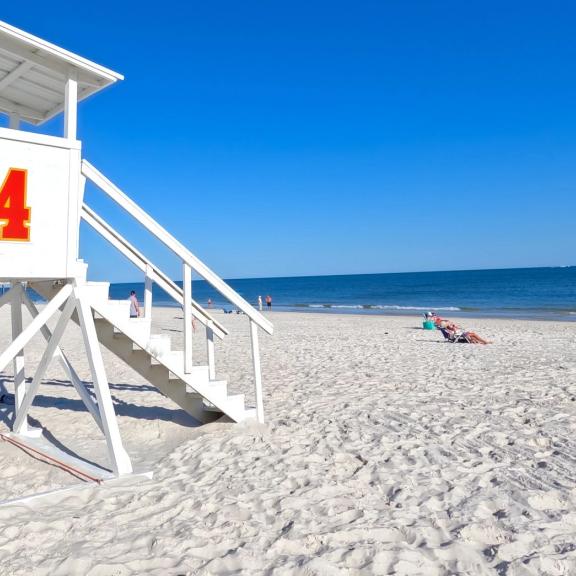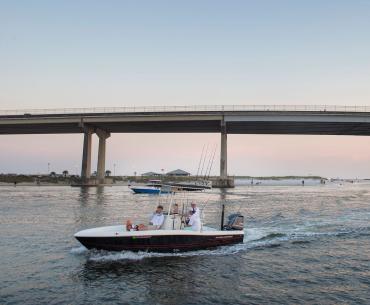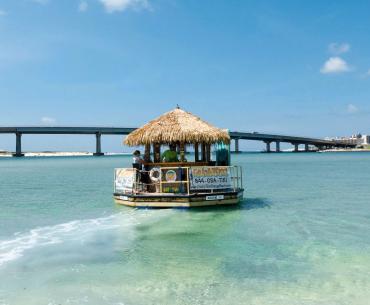
Beach Report and Safety
In Gulf Shores & Orange Beach
Daily Beach Report:
Thursday, July 3, 2025
 |
Medium Hazard
Moderate surf and/or currents
|
- Today’s Flag Color: Yellow Flags. Yellow Flags represent Medium Hazard with Moderate Surf and Currents. Please swim with caution.
- Gulf Temperature: 86 degrees
- Surf Conditions: Calm with waves at 1 foot or less and east running current.
- Rip Current Forecast: Low Risk
- Daily Weather: Mostly sunny with the high temperature in the mid 90’s.
- Wind: Northwest winds around 10 mph.
- UV Index: Very High
- Tides: High Tide is at 4:50 AM & Low Tide is at 4:50 PM.
*Please review the rules and regulations and respect our shores to help protect our beloved natural resources during your visit. Adhere to the white Leave Only Footprints flags and remove all belongings at the end of your day.
LIFEGUARDS & BEACH PATROL AVAILABILITY
Please be advised that there will be no lifeguards on duty on Gulf Shores and Orange Beach public beaches from October through February. During this time, beach patrol and response will be limited. Always check the beach flags and surf conditions before entering the water, and never swim alone. Scroll to view an interactive map of lifeguard tower locations on Alabama's beaches.
Beach goers at Alabama Point East public access can borrow life jackets while enjoying their time on the beach. These life jackets are free and are available in various sizes. We encourage children and those who aren’t strong swimmers to take advantage of these vests. Remember to return them before you leave.
BEACH FLAG WARNING SYSTEM
Beach warning flags are posted at all public beach areas in Gulf Shores, Orange Beach and Gulf State Park. Conditions are monitored throughout the day. Please remember that the absence of red flags does not assure safe conditions. Within the corporate city limits of Gulf Shores and Orange Beach, it is illegal to enter the Gulf when two red flags are displayed.
 |
Medium Hazard
Moderate surf and/or currents
|
 |
Marine Pests are Present
Exercise caution |
 |
High Hazard
High surf and/or strong currents
|
 |
Water Closed To The Public
It is illegal to enter the Gulf within the corporate limits of either city when two red flags are displayed.
|
Watch this short video to learn about the beach flag warning system on Alabama's Beaches.
|
|
Watch Visual Stories
Learn How to Have a Safe and Fun Vacation on Alabama's Beaches
HOW TO SPOT A RIP CURRENT
- Rip currents are most prevalent when the waves crash perpendicular to the beach rather than at an angle.
- One of the easiest ways to spot a rip current is to look for gaps between the waves. A small patch of calm water surrounded by waves is often a rip current.
- Look for discolored water near the shore. Rip currents tend to drag large amounts of sand and sediment back out to sea with them, so many rip currents are easily identified by a noticeable flow of sand extending away from the shore.
- Rip currents are also common in areas near sand bars, piers, pilings and jetties.
BEWARE OF RIP CURRENTS
Rip currents are powerful, narrow channels of water moving quickly away from shore. They occur on all beaches and may happen at any time. Before you hit the beach, learn how to recognize a rip current and how to escape if caught in one.

HOW TO ESCAPE A RIP CURRENT
- Remain calm. Fighting the rip current can exhaust you.
- Escape the current by swimming parallel to the shoreline. When free of the current, swim at an angle—away from the current—toward shore.
- If unable to escape by swimming, float, or tread water. When the current weakens, swim at an angle away from the current toward the shore.
- If at any time you feel you will be unable to reach shore, draw attention to yourself: face the shore, call, or wave for help.
- To help someone else caught in a rip current, first call 9-1-1 for assistance, then seek help from a lifeguard. If a lifeguard is not present, yell instructions on how to escape or throw the victim something that floats.
Lifeguard Tower Locations on Alabama's Beaches
*Towers are not staffed from October through February.





